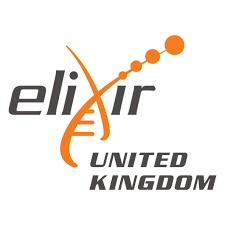GtoPdb is requesting financial support from commercial users. Please see our sustainability page for more information.
|
Synonyms: IL-1F11
Compound class:
Endogenous peptide in human, mouse or rat
Comment: IL-33 is a pleiotropic IL-1 family cytokine that can both promote type 2 inflammation and also drive immunoregulation through expansion of Foxp3+Treg cells. The outcomes of IL-33 activity appear to depend on the cells that produce it, either myeloid dendritic cells (DC) or epithelial cells [6]. DC-derived IL-33 supports Treg cells. The main cellular targets of IL-33 are innate lymphoid cells type 2 (ILC2), involved in the initiation of the type 2 immune response (secretion of IL-5 and IL-13) during parasitic infection and allergic diseases such as asthma. Full length IL-33 is cleaved by mast cell chymase (chymase 1; CMA1) to produce its significantly more active form [7].
The ST2/IL-33 axis is recognised as playing an important role in the development/exacerbation of IgE-dependent inflammations such as asthma and atopic dermatitis [1,5], and received much interest from the pharmaceutical industry. Blockade of IL-33 activity (and/or its receptor ST2) represent potential novel mechanisms for pharmaceutical intervention to suppress allergy and mast cell-eosinophil interplay. Indeed, astegolimab (RG6149/AMG 282) is an example of a fully human anti-IL-33 monoclonal antibody, that was developed as a potential therapy for mild atopic asthma and chronic rhinosinusitis. Unfortunalely, in common with other anti-IL-33 leads, RG6149 failed to deliver clinical efficacy in these indications.
Species: Human
|
| References |
|
1. Bandara G, Beaven MA, Olivera A, Gilfillan AM, Metcalfe DD. (2015)
Activated mast cells synthesize and release soluble ST2-a decoy receptor for IL-33. Eur J Immunol, 45 (11): 3034-44. [PMID:26256265] |
|
2. Cayrol C, Girard JP. (2014)
IL-33: an alarmin cytokine with crucial roles in innate immunity, inflammation and allergy. Curr Opin Immunol, 31: 31-7. [PMID:25278425] |
|
3. Chen YL, Gutowska-Owsiak D, Hardman CS, Westmoreland M, MacKenzie T, Cifuentes L, Waithe D, Lloyd-Lavery A, Marquette A, Londei M et al.. (2019)
Proof-of-concept clinical trial of etokimab shows a key role for IL-33 in atopic dermatitis pathogenesis. Sci Transl Med, 11 (515). [PMID:31645451] |
|
4. England E, Rees DG, Scott IC, Carmen S, Chan DTY, Chaillan Huntington CE, Houslay KF, Erngren T, Penney M, Majithiya JB et al.. (2023)
Tozorakimab (MEDI3506): an anti-IL-33 antibody that inhibits IL-33 signalling via ST2 and RAGE/EGFR to reduce inflammation and epithelial dysfunction. Sci Rep, 13 (1): 9825. [PMID:37330528] |
|
5. Hsu CL, Neilsen CV, Bryce PJ. (2010)
IL-33 is produced by mast cells and regulates IgE-dependent inflammation. PLoS ONE, 5 (8): e11944. [PMID:20689814] |
|
6. Hung LY, Tanaka Y, Herbine K, Pastore C, Singh B, Ferguson A, Vora N, Douglas B, Zullo K, Behrens EM et al.. (2020)
Cellular context of IL-33 expression dictates impact on anti-helminth immunity. Sci Immunol, 5 (53). [PMID:33188058] |
|
7. Lefrançais E, Cayrol C. (2012)
Mechanisms of IL-33 processing and secretion: differences and similarities between IL-1 family members. Eur Cytokine Netw, 23 (4): 120-7. [PMID:23306193] |
|
8. Londei M, Kenney B, Los G, Marino M. (2017)
A phase 1 study of ANB020, an anti-IL-33 monoclonal antibody, in healthy volunteers. Journal of the American Academy of Dermatology, 76 (6): AB20. DOI: 10.1016/j.jaad.2017.04.097 |
|
9. Osbourn M, Soares DC, Vacca F, Cohen ES, Scott IC, Gregory WF, Smyth DJ, Toivakka M, Kemter AM, le Bihan T et al.. (2017)
HpARI Protein Secreted by a Helminth Parasite Suppresses Interleukin-33. Immunity, 47 (4): 739-751.e5. [PMID:29045903] |
|
10. UK Department of Health and Social Care.
COVID-19 treatments could be fast-tracked through new national clinical trial initiative. Accessed on 01/06/2020. Modified on 01/06/2020. gov.uk, https://www.gov.uk/government/news/covid-19-treatments-could-be-fast-tracked-through-new-national-clinical-trial-initiative |






